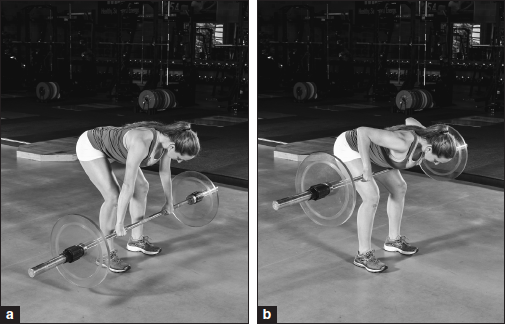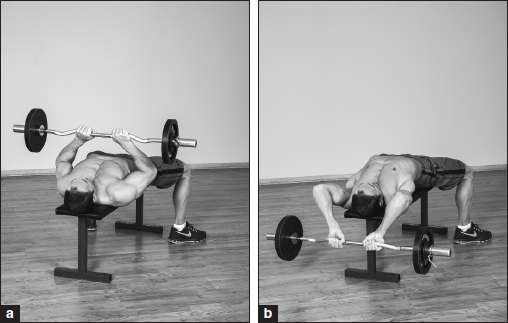Pairing biomechanically similar exercises
This is an excerpt from Timing Resistance Training by Amy Ashmore.
Pairing biomechanically similar exercises is a formula to help exercisers and professionals choose exercises and design workouts and long-term programs. The first step is to focus on a specific muscle group or joint action.
The mode of exercise is a critical programming cue to entrain muscle clocks. Muscle clocks look for biomechanical similarity. The biomechanical similarity is the degree to which two exercises use similar motions and is determined by the primary muscles used and the associated joint actions. Exercise-specific timing cues are based on the primary muscles trained and the primary joints and muscle actions performed. For example, a triceps pushdown is similar to a triceps overhead press, because both exercises use the triceps muscles as the primary muscle and elbow flexion and extension as the primary joint action.
Biomechanical similarity is a training method that pairs two exercises that are alike. Pairing exercises that use similar muscles or muscle groups in similar joint patterns provide muscle clocks with invaluable timing cues. The similarity of movements is an entrainment cue that can help muscle clocks establish a schedule and anticipate upcoming training sessions. With biomechanically similar exercises providing consistent clues, muscle clocks learn when to click on the molecular actions associated with resistance training during each 24 h period.
Same or Similar Muscles Used
Biomechanically similar exercises work the same or similar muscles. However, the goal of a paired exercise training model is to activate the same muscles in two different ways. Different movement patterns use different bundles of muscle fibers within the same muscle. For example, both a back squat and leg press train the muscles of the legs and hips. However, each exercise activates slightly different bundles of muscle fibers within the same muscles, differing how they are used. The end programming result is a more comprehensive workout for the entire muscle group. Figures 7.1 and 7.2 illustrate biomechanically paired exercises using the bent-over row and the pullover.

Figure 7.1 Bent-over row: (a) starting position; (b) ending position.

Figure 7.2 Pullover: (a) starting position; (b) ending position.
More Excerpts From Timing Resistance TrainingSHOP

Get the latest insights with regular newsletters, plus periodic product information and special insider offers.
JOIN NOW


